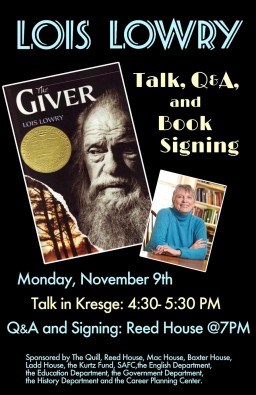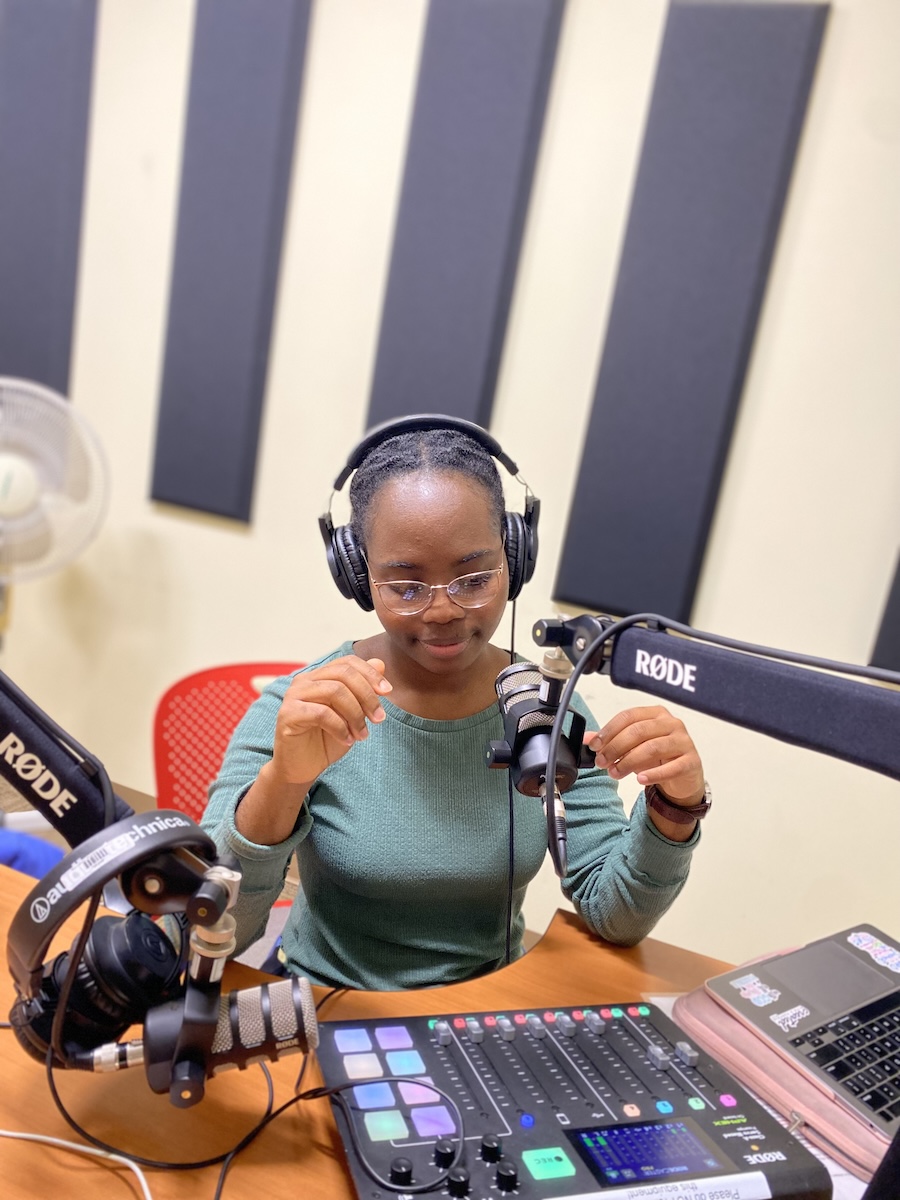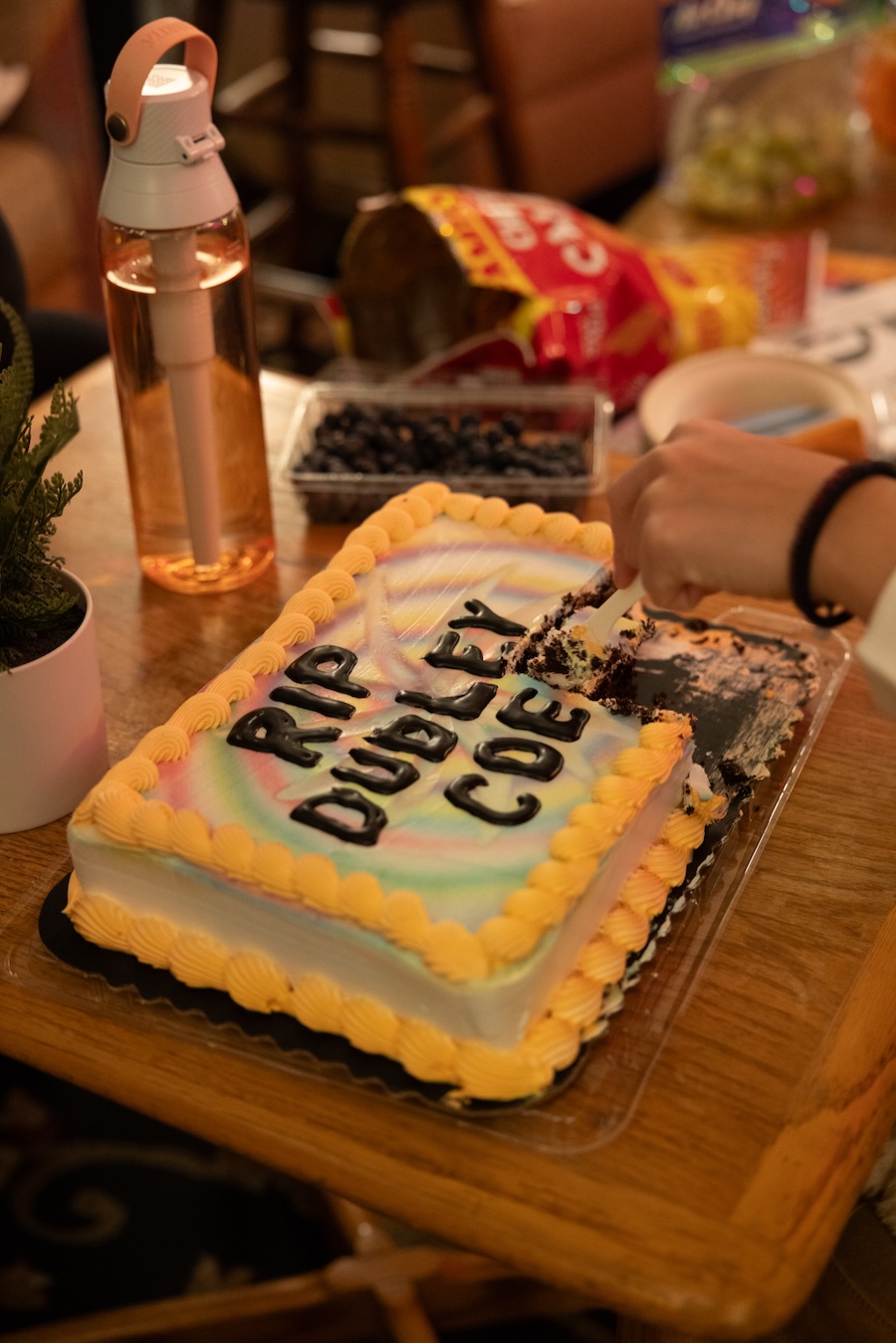Children’s Book Author Lois Lowry Visits Bowdoin
By Rebecca Goldfine
Periodically throughout Lois Lowry’s recent talk at Bowdoin, she would read one of the funny, touching or critical emails she has received from her readers over the years. The first email she read aloud was from a girl about 10 years old who complained that one of Lowry’s books contained material unsuitable for kids. The note began, “I do not think this is a good book. It has stuff kids should not read about in it!!!!!!!!!!!!!!!!!”
Lowry, who is 78, has written more than 40 books for children. She was invited to speak at Bowdoin by students of The Quill, a literary magazine, and her talk was sponsored by a number of campus groups. After her talk in Kresge Auditorium, Lowry met with students in Reed House for an informal career chat.
Lowry used her email exchange with the girl, Megan, to explain why she has devoted her career to writing books for children. She said that in her reply to Megan’s first email, she asked what she had found objectionable in the book, Anastasia Has the Answers. The two ended up corresponding back and forth over several days. It came out that Megan didn’t approve of one of Lowry’s characters worrying about having a crush on her female gym teacher. While this happens in life, Megan said, “you do not need to put that stuff in kids’ books.”
Lowry wrote to Megan, “I think kids should know about everything and that reading books is a great way to learn.” She also signed one of her emails “with love, Lois Lowry.” After this, the girl wrote, “Okay, I do not like this book and you do not have to take my advice, but I absolutely hate this book. Oh, and P.S., never, ever send me anything ever again, and not with love!”
Despite Megan’s curtness, and despite the likelihood she had a parent or teacher goading her on, Lowry told the audience that she loves this little girl. “I love that she is 10 years old, reading a book, thinking about a book, worrying about a book, even objecting to a book,” she said. “As she gets older, those things that she has thought about will not go away, because kids that age are deeply affected by what they read.”
And this is why Lowry said she has never stopped writing stories for children — because young people are so touched and even changed by the stories they read.
During her talk, Lowry alternated between speaking about her life and talking about her writing. She described several personal stories to explain some of the inspiration for her works, including the novel Autumn Street, the Anastasia Krupnik series, the Gooney Bird series and other books.
Lowry’s writing career took off after she published a story, Crow Call, in a magazine for adults. She was already a mother of four children then. (Originally published in the 1970s, Crow Call was rereleased as a picture book just a few years ago.) Lowry said she had been standing in the back porch of her home in Maine, and the smell of the cold, November day stirred a memory of when her father had returned from the war. She was nine at the time, and she remembered feeling frightened of him because he had been gone so long and was a stranger to her. He took her out for a day together, just the two of them. In the book, the little girl asks her father whether he was scared in the war. “He looks ahead, up the hill, and after a moment, he says, ‘Yes, I was scared’.”
Lowry said Crow Call is about reconciliation. She added, “All stories, in whatever form they take, are about reconciliation in one form or another.”
That story got the attention of a book editor, who asked Lowry to consider writing a book for children. Her older sister Helen had recently died of cancer, at age 28, and Lowry wrote her first young adult novel, A Summer to Die, about a sick young girl, who was also an older sister. When Helen was in the first grade, in 1940, she would return home every day after school and teach Lowry, who was three, everything she had learned that day in class, including how to read. “She was my best friend, my worst enemy often, my sidekick, my partner in crime sometimes, but also my first teacher,” Lowry said.
Lowry’s idea for one of her best-known books, The Giver, came to her after she visited her 92-year-old father in an assisted living facility. His memory was deteriorating, and Lowry found that she had to repeatedly explain to him that his eldest daughter had died years earlier. “I began to think about memory, and what it would be like if we could control memory, manipulate it,” Lowry said. “Would we all be happy if we didn’t have to remember anything bad?” The Giver is about a boy living in a society that has eliminated conflict, poverty, unemployment, divorce, injustice and inequality by doing away with emotional depth.
Lowry ended her talk by reading another email from a reader, a 16 year old named Noah. “Something major about me is I am gay and I haven’t come out for fear of really everything,” she read his note out loud. “My family…they want me to be a normal human being who follows rules, buys a house, marries a girl, has kids, gets a job, grows old, dies, but that is not what I want to do.” He told Lowry that he had been inspired by The Giver to be himself and not to change to please others.
This email, Lowry said, “was a reminder, as all these emails are, even the ones from children who want the similes and metaphors explained to them, how profoundly affecting a book can be for a kid at a particular time in his or her life.”



